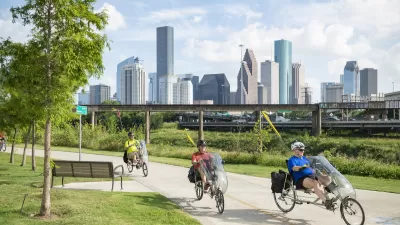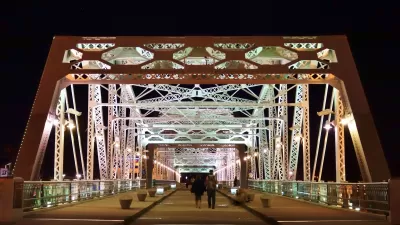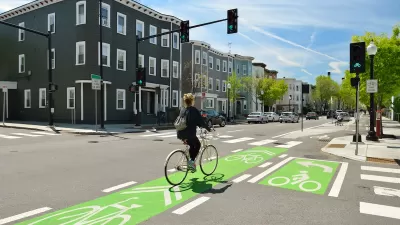A formerly underutilized corridor in Citrus Heights, California is being transformed into a vibrant, walkable street—and stimulating economic growth in the process.

An article from the California League of Cities highlights the successes of Citrus Heights, a town in the Sacramento area where "City officials embrace a transportation philosophy known as complete streets, meaning that mobility for all users, including transit users, pedestrians, and cyclists, is incorporated into infrastructure projects, along with greenhouse emission goals."
As the article states, "Investments in local infrastructure can yield benefits that extend far beyond the curb. A 2021 report found that upcoming spending on federal, state, and local infrastructure will generate nearly $200 billion in economic activity in California alone." Citrus Heights provides an example of how local investments generate further investment and economic development.
For starters, the number of conflict points, such as fewer left-hand turns, has been reduced, which lowered the area’s crash rate by 9%. Travel lanes are also narrower, and the roadway was constructed with the extra protection of vertical curbs, which also reduces the likelihood of a crash.
Additionally, the medians and sidewalks are lined with trees, providing much-needed shade for pedestrians and cyclists, as well as a barrier from oncoming traffic. Utility wires have been placed underground, reducing the number of sidewalk obstructions for pedestrians.
According to the article, the infrastructure improvements along the city's Auburn Boulevard have spurred $23 million in new investment and new businesses, creating hundreds of jobs. The article praises Citrus Heights for its commitment to encouraging infill development and making improvements to pedestrian and bike infrastructure that "provide a sense of community vibrancy that has really been lacking in this corridor."

Study: Maui’s Plan to Convert Vacation Rentals to Long-Term Housing Could Cause Nearly $1 Billion Economic Loss
The plan would reduce visitor accommodation by 25,% resulting in 1,900 jobs lost.

North Texas Transit Leaders Tout Benefits of TOD for Growing Region
At a summit focused on transit-oriented development, policymakers discussed how North Texas’ expanded light rail system can serve as a tool for economic growth.

Why Should We Subsidize Public Transportation?
Many public transit agencies face financial stress due to rising costs, declining fare revenue, and declining subsidies. Transit advocates must provide a strong business case for increasing public transit funding.

How to Make US Trains Faster
Changes to boarding platforms and a switch to electric trains could improve U.S. passenger rail service without the added cost of high-speed rail.

Columbia’s Revitalized ‘Loop’ Is a Hub for Local Entrepreneurs
A focus on small businesses is helping a commercial corridor in Columbia, Missouri thrive.

Invasive Insect Threatens Minnesota’s Ash Forests
The Emerald Ash Borer is a rapidly spreading invasive pest threatening Minnesota’s ash trees, and homeowners are encouraged to plant diverse replacement species, avoid moving ash firewood, and monitor for signs of infestation.
Urban Design for Planners 1: Software Tools
This six-course series explores essential urban design concepts using open source software and equips planners with the tools they need to participate fully in the urban design process.
Planning for Universal Design
Learn the tools for implementing Universal Design in planning regulations.
City of Santa Clarita
Ascent Environmental
Institute for Housing and Urban Development Studies (IHS)
City of Grandview
Harvard GSD Executive Education
Toledo-Lucas County Plan Commissions
Salt Lake City
NYU Wagner Graduate School of Public Service





























